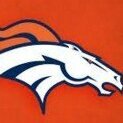Computer Braindead
-
Recently Browsing 0 members
- No registered users viewing this page.
-
Topics
-
-
Popular Contributors
-
-
Latest posts...
-
67
Biden laments over Trump’s handling of the presidency "These are Dark Days"
NumbNuts in action -
67
Biden laments over Trump’s handling of the presidency "These are Dark Days"
I just want my Biden exchange rate and COLA. Don't care about anything else. -
-
7
Cardiologist recommandation in Bangkok
Infrequent isolated PVCs usually do not need treatment. But they would aldo usually not cause the symptoms you originslly described. If the dymptoms persidt may need to look for other cause. -
140
Good news for Americans: Trump is giving $600 rebate to everybody
A post using a derogatory nickname to belittle or mock individuals with differing political views has been removed. -
67
Biden laments over Trump’s handling of the presidency "These are Dark Days"
Says the appropriately named @angryguy!
-
-
Popular in The Pub



.thumb.jpg.3ee24d9400fb02605ea21bc13b1bf901.jpg)





.thumb.jpg.82631abb512ae61a745d964452c5b1b9.jpg)



Recommended Posts
Create an account or sign in to comment
You need to be a member in order to leave a comment
Create an account
Sign up for a new account in our community. It's easy!
Register a new accountSign in
Already have an account? Sign in here.
Sign In Now